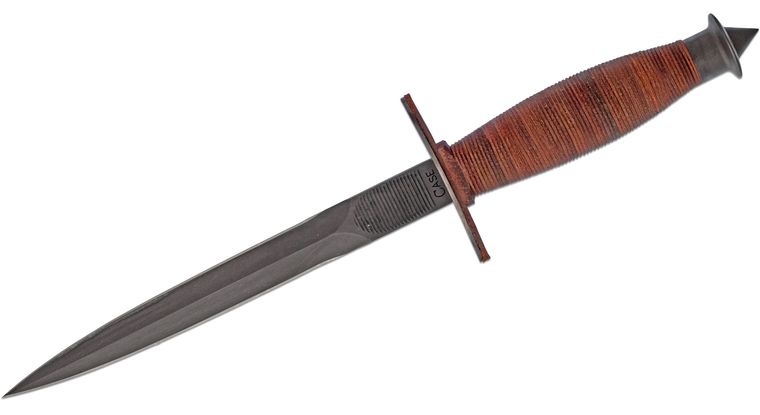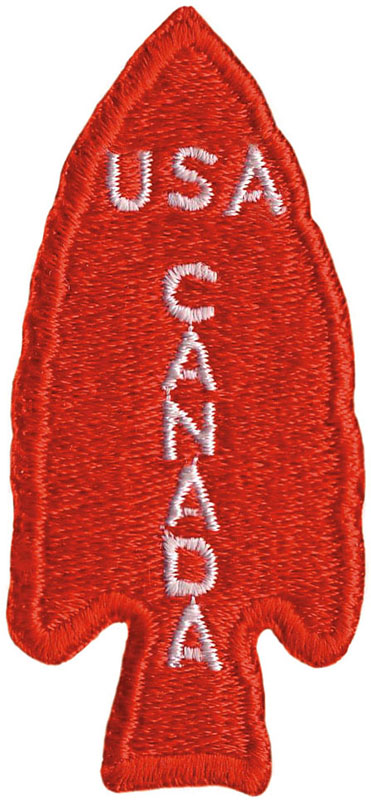England, August 15-31, 1942:
After the disaster that was the Dieppe Raid, the survivors were for the most part given leave in England as the brass (military leadership) tried to salvage what it could of a Raid that had led to 3,600 of the 6,000 men that had landed being Killed, Wounded or Captured. Also, 33 Landing Craft and a Destroyer had been sunk and over 100 Aircraft lost while the Germans only lost half as many planes. All in all, it was an epic failure, though the Canadians being 'Mentioned in Dispatches' (one of the Commonwealth's equivalents of Medals, they have Medals as well, but usually only for REALLY heroic actions) and the U.S. Rangers all being awarded the Bronze Star help to mollify their feelings, somewhat....
For the Talents, the next couple of weeks in England were a time of Reflection, Enjoyment, Relaxation and Nervousness about 'what was coming next'. By the end of the month, all had been contacted by the SSO (Special Services Office) and had received orders to report to Achenarry, Scotland on 1 September. For the U.S. Rangers, they were chagrinned to be heading right back to the place they had just done so much training at. Well, at least it would be familiar....
Scotland, September 1-October 16, 1942:
After showing up in the 'quaint' Scottish Village of Achenarry, the Talents were soon grouped together along with a pair of newcomers, a former Canadian Pilot Officer named James Hyde-Smyth whom Koda had briefly met on the Yukon at Dieppe; and also a U.S. Army Air Corpse (USAAC) B-17 Tail Gunner named Mario 'Mark' Battaglia who was the only survivor of his plane being shot down over the beach at Dieppe. Mark was only saved as his Talent Power of being able to create a Shield around himself as the rest of his plane's crew was killed in the crash. He was lucky to be able to get to a retreating Landing Ship and has since been reassigned to the SSO.
The Brooklyn born Battaglia is a soon good friends with most of the other Talents due to his friendly nature, but Hyde-Smythe is another story altogether. The wiry, mustached Officer is cold, affects a haughty British accent (his mother is allegedly a British noble) and is in general arrogant and condescending, especially to Koda and Porcupine. However, he IS surprisingly capable of being able to adapt to being a Ground Unit leader and combatant.
Six weeks fly by and while the training is tough and difficult, experience British Talents are able to help the young Talents get better and better at being able to manifest their Powers when needed and learning how to best utilize them. They also learn the distinctive smell/feel/sound of their teammates' Talent Powers as well. Hyde-Smythe can Fly and See in the Dark while Mark can use his Shield to Protect himself along with being able to generate Energy Blasts. They also learn that every member of the team has experience in the great outdoors, particularly in Mountainous country.
At the end of the Training, they are dubbed Special Services Team 11 and assigned to join some unit called 'the First Special Service Force' out in Montana. None of them had ever heard of it, but they were soon on a long series of flights that ended in Helena, Montana.
Helena, Montana, October 17, 1943 to April, 1943:
After arriving at Fort William Henry Harrison near the city of Helena, Montana, SST 11 soon reports to the Commanding Officer of the First Special Service Force, Colonel Robert Frederick. Frederick greets them warmly and they all have a favorable impression of the man; a tough, capable, concerned-for-his-men and high-energy type who gives them a friendly welcome and a quick background on the unit....
The First Special Service Force was the brain-child of a bizarre British 'idea-man' named Geoffrey Pyke. He envisioned a Brigade sized unit of winter-trained commandoes to hit the 'snow covered' parts of Northern Europe that are controlled by the Germans, specifically Norway. The idea was approved but due to Pyke's eccentricities and the fact that he was MUCH better at coming up with unorthodox ideas than the ability to actually turn them into reality; Frederick was soon placed in command.
Very early in the process, the Canadian Army was tapped as it would have a number of troops well-equipped to handle serious winter conditions and originally the idea was the the unit would be para-dropped into Norway and left on its own to hit economic and military sites to draw German attention away from the Eastern Front. The Force was to be composed entirely of men well able to handle themselves in mountains, cold-weather and be well-trained in various combat techniques, including Demolitions, Marksmanship, Hand to Hand combat and Tactics.
The Force started to come together in the Summer of 1942 with U.S. and Canadian troops filing into Fort William Henry Harrison in Helena, Montana. Frederick found numerous unorthodox trainers for his unit, including Ex-Shanghai Police Officers; Norwegian Mountain Climbers and Skiers and British Commandoes. Integration was tough at first with the different nomenclature, military traditions, etc.; but soon enough, the unit was working together as a cohesive unit despite such minor things as Americans calling some officers 'LOO-tenant' and Canadians calling the same officers 'LEFT-tenant'.
The Training consisted of constant runs, hikes, climbs in the mountains, time on the firing range, learning Demolitions, figuring out how to take care of all kinds of military equipment and learning the ins and outs of advanced hand to hand combat, including Knife Fighting. At this point, Frederick smiles and pulls a unique Knife from his belt sheath and tells the members of SST 11 that the weapon, officially the V-42 Commando Fighting Knife, was his own design, with lots of input from former members of the Shanghai Police Department. It was extremely sharp, well-balanced for throwing and an effective fighting weapon. Frederick tells them they will all soon be issued one.

Frederick tells them he plans to use them as an Independent force to amplify Combat Sections' powers here and there and most importantly as a Counter to Enemy Talents. With that, he nods and tells them to get some rest and get ready for some hard training in the morning.
The rest of the year flies by in a blur and SST-11 are soon well-integrated with the 'Forcemen' as they call themselves and learn that the city of Helena has adopted the Force as their own and soon hundreds of members of the unit are dating or married to local women. The members of SST 11, while all well adapted to living in the mountains, they all are soon better shots, better hand to hand fighters, better tacticians and better able to handle Heavy Weapons, Demolitions and able to repair the local weapons and equipment than they ever had been in their lives.
While half the combat element of the Force (about 1,000 of 2,000 men....there is also a non-combat element of about 780 men) are Canadian; all of the equipment and weapons are American. The uniforms are essentially American though a unique shoulder patch is worn by the unit, showing the U.S. and Canadian makeup of the unit:

In the late Fall of '42 it is learned that the unit will NOT be Para-dropped anywhere due to lack of planes (all of the available planes are being allocated to the U.S. and British Airborne Units) and the Norway mission was scrubbed. Frederick was unsure of where the unit would be utilized, but he continued to press for the Unit to be given any assignment, anywhere. He had an admirer in the Chief of Staff of the U.S. Army, George Marshall. In the meantime, training continued all thru the Winter.
In April of '43 the Unit was tasked with going to Norfolk, VA for amphibious invasion training and there was a wild, bittersweet party as the Force bid farewell to Helena, Montana. After taking trains all the way across the country, the Force was soon learning how to hit the shores from 'Alligator' Landing Craft in Virginia Beach and while off-duty getting into scraps with sailors and Marines. Soon, Frederick informs the unit that the mission they have been training for is the invasion of the Island of Kiska in the Aleutian Islands off of Alaska, which the Japanese had invaded and conquered in the summer of '42.
By August of '43 the Force was in Alaska, gathering with a force of 30,000 total troops mostly from the U.S. 7th Infantry Division, but also a Brigade of Troops from the 6th Canadian Division. The Japanese had conquered two islands back in June of '42, Attu and Kiska. The former had been liberated in May at a terrible cost to the green U.S. troops that had hit the island with more casualties to the awful weather conditions the U.S. military had not properly equipped the troops to deal with than to Japanese action...but nonetheless, tales of the insane, suicidal 'Banzai Charge' the last of the Japanese troops had launched made their way to the Forcemen, along with the other units tasked with the invasion of Kiska.
The date for the hitting of Kiska was to be August 15; almost a year to the day to the survivors of Dieppe. A couple of nights before the attack was to be launched however, a new Major named Rick Vallens from SSO and Colonel Frederick came to the team and led them to a quiet little office. Vallens had recently been assigned to Frederick's staff as the liaison for SSO activities and he had access to what he called 'Special Intelligence'. In essence, a new Mission was being outlined for SST 11......
*OOC: Okay, I'll be putting up a new post for the Alaska mission shortly outlining what SST 11 is assigned to do.....you can post in response on this thread if you like with anything you want over the past almost year.....I.e. making friends/girlfriends in Montana.....training stuff....whatever; but you don't have too.

